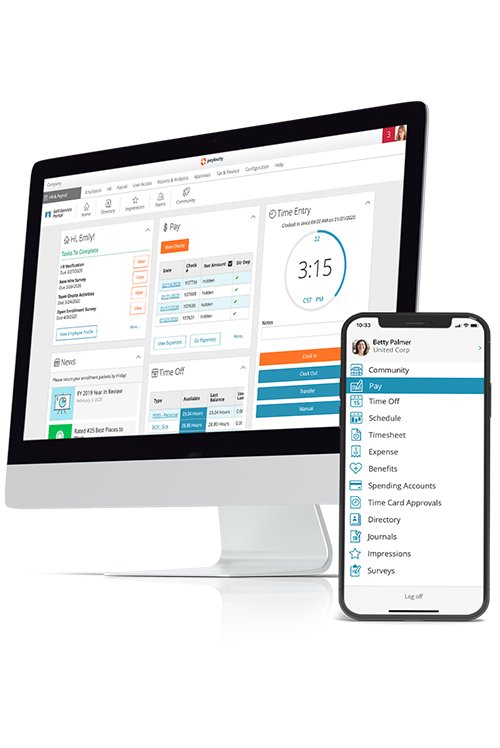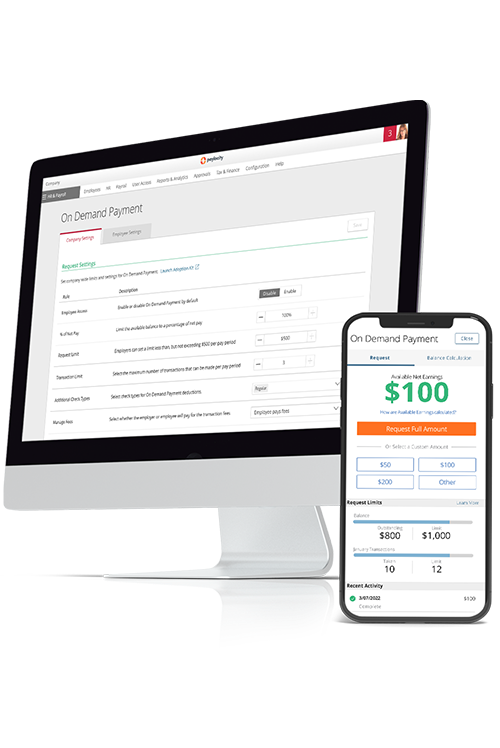
Redefining Flexibility in the Workplace
So, what does workplace flexibility look like? Hint: There’s no yoga involved.
Once upon a time, flexibility at work meant offering a few remote workdays or somewhat malleable start times. But that approach just won’t fly with today’s workers.
While the move to remote work was accelerated by COVID-19, employees have long demanded a stronger focus on work-life balance. If organizations want to stay relevant, they should consider loosening their commitment to full-time office work, especially for jobs that can easily be done remotely.
In this article, we’ll explore what modern workplace flexibility looks like, why it’s so important, and how leading organizations are approaching it.
What is Workplace Flexibility?
Workplace flexibility is different for every organization. It could be flexible hours or open workspaces. The one thing that's constant is that the employee determines how and when they work.
While many equate “working from home” with “workplace flexibility,” they’re not exactly the same. The latter can take a variety of forms.
Some aspects of flexibility pertain to when and where employees work:
- Working from home or remote work: Workers are not required to come into the office, but can instead work from another off-site location.
- Staggered hours: Different workers have their own start and end times
- Compressed hours: Employees work their contracted number of hours in fewer than five days. For example, four 10-hour days instead of five eight-hour days.
But flexibility also affects how employees work:
- Shift swapping: Employees are allowed to easily swap shifts with their coworkers.
- Payment on demand: Employees receive financial flexibility through early access to wages.
- Flexible learning: Professional development opportunities provided on-demand or through mobile devices.
As you can see, employee flexibility means much more than simply offering remote work. To transform your workplace you need an entirely new mindset. Your flexibility should inform every aspect of the workplace, not just the physical workspace.
Why is Workplace Flexibility Important?
Providing more flexibility at work might seem like a heavy lift. And you may be wondering — is this just benefiting the employee at the expense of the employer?
It’s a fair question. But let’s explore why we — and many experts — think a little more flexibility goes a long way for everyone.
Employer Benefits of Workplace Flexibility
Like lower operating costs, reduced turnover, and improved employee engagement? Workplace flexibility can help with that.
In fact, the Society for Human Resource Management (SHRM) conducted a massive study on the business benefits of flexibility and found that workplace flexibility has been linked to a number of positive outcomes, including:
- Increased job satisfaction
- Expanded availability to clients
- An enhanced ability to attract and retain highly skilled employees
- Employee loyalty, engagement, and improved performance
- Reduction in absenteeism, injuries, distractions, and turnover
- Cost savings on real estate and overhead
Apparently, organizations that embrace flexibility see positive outcomes for both their workers and their bottom line.
Employee Benefits of Workplace Flexibility
Employee mental health is in. Burnout is out. And today, many employees are simply not happy.
In fact, a study by Champion Health found that nearly one in four workers met the criteria for “clinically relevant symptoms” of anxiety and depression.
Workplace flexibility can help alleviate these feelings in several ways. For example, if an employee is anxious due to challenges in managing his work life with his other responsibilities, flexible scheduling can allow him to structure his work hours around those needs.
- Offering a few remote days a week, or a flexible start time, can help employees avoid long commutes which can exacerbate stress.
- Flexible schedules can improve work-life balance. Employees are able to better juggle the needs of their work and their personal life.
- We all work differently. Empowering employees to work when and where they do their best work can help combat burnout.
What’s more, employees want to engage in flexible continuing education opportunities, with 94% of workers reporting they’d stay with their companies longer if the organization invested in their development. However, many employees report they don’t engage in workplace learning because they feel they don’t have time to do so.
Ways to Offer Workplace Flexibility
As you can see, workplace flexibility can take many different forms. But let’s get practical — how can you apply it in your organization? Here’s a few strategies to try out.
Mobility and Employee Self-Service Flexibility
I have to submit a form to HR to change my banking information? How passé.
Employees don’t want to waste time sifting through paperwork or jumping through hoops to accomplish basic tasks. Thankfully, most, if not all, basic HR tasks can now be done through mobile-enabled HR software.
From easy access to benefits to learning opportunities, early access to wages, performance reviews, and more, employee self-service gives workers access to these mobile HR and payroll solutions to get what they need, when they need it, wherever they are.
Learning, Development, and Performance Flexibility
In addition to workplace flexibility, today’s employees also relish the chance to develop their skillsets and careers on the job.
A full 68% of employees want to learn while at work, and 49% prefer to learn when it’s necessary to improve their skills for their role. Having flexible learning opportunities, like customized, bite-sized courses, can make a huge difference.
And when finally applying all of this learning and development to their work, employees need the same flexibility in the feedback they receive. Flexible Performance management tools, like transparent, two-way communication and personalized video feedback, are perfectly suited to that end.
Payday Flexibility
Imagine this: Payday is a week away, and your car goes kaput. You need your car to get to work, pick up the kids, and buy groceries. On top of that, your among majority of Americans who are not in a place to handle a $1,000 emergency expense.
You’ll either have to swipe your credit card, ask a relative for a loan, or worse, get a payday loan to get you through.
But what if you could simply tap into a mobile app to get access to the half of the paycheck you’ve already earned that hasn’t been paid out yet? Implementing on-demand payment is how many organizations provide additional flexibility to their employees.
This perk provides financial flexibility to employees and can also be an enticing benefit for prospective talent. In a tight labor market, it might make the difference between a candidate accepting your offer over your competitor’s.
What’s more, the best payment on-demand services won’t affect your company’s regular payroll processes, so there’s no cash flow disruption. It’s a win all around.
Workplace Flexibility
Organizations can provide flexibility by empowering employees to work where it’s most convenient. For a growing number of today’s workers, this happens outside a traditional office.
Virtual and remote working, for example, has been shown to increase productivity, and can reduce not only an employee’s travel costs, but the overall business’ carbon footprint too.
However, remote work lacks the immediacy of working in an office, and also might not be feasible depending on your industry.
In these cases, look to a hybrid work setup. Hybrid work splits an employee’s time between working at home and in an office to combine the flexibility of remote work with the social benefits of a traditional office environment.
Some of the benefits of this approach include improved work-life balance, more efficient use of time, control over work hours and work location, burnout mitigation, and higher productivity.
Workspace Flexibility
Sure, many employees are working from home out of convenience or geographic location. But maybe they just don’t like the office. Have you considered the layout of your working environment, not just the location? A poorly designed workspace can reinforce ideas of inflexibility.
Historically, office design was based on a more inflexible approach to the workday. Employees were expected to work a set number of hours, and productivity was measured by the number of hours at a desk.
Think for a moment about your existing office space. Does it?
- Have walls that separate different departments?
- Lack a designated space for calls?
- Have senior team members separated from their teams?
- Have dedicated desks for each employee?
All these factors combine to send the wrong message: that your organization is built on rigid practices. To avoid this, you need to adapt the workspace to accommodate more flexible measures:
- Have separate spaces for work and socialization.
- Introduce ‘hot desking’ so staff no longer have dedicated desks.
- Avoid ‘lanes’ — tables that contain lots of workers.
- Have an open space rather than separate rooms.
Schedule Flexibility
Finally, workplace flexibility isn’t limited to just where work happens, but also when.
Few organizations want to deviate from the traditional nine-to-five, Monday-to-Friday working schedule, but consider whether rigidly sticking to it really makes sense.
After all, you could be missing out on quality workers who have unique needs, that require non-traditional working hours to accommodate. In fact, it’s been found that 72% of employees would be willing to work the same hours for the same pay but over four days instead of five.
Furthermore, condensed schedules have a particular benefit for female employees, according to Business Insider’s Molly Lipson.
“Since women tend to take on more caring responsibilities, the extra day off work was most beneficial for them, allowing the extra load of emotional labor to be spread more evenly,” Lipson writes.
Go Beyond Flexible Working
Flexible working must go beyond simply providing flexible hours, a laptop, and a few remote workdays.
For companies to thrive, they must meet workers where they are by exercising flexibility through both their policies and technologies, including mobility and mobile-enabled initiatives.
Ready to help your organization realize its true potential for flexibility? Start by downloading our free Navigating the Buying Process for HR and Payroll Solutions Guide, or request a demo to get a tour of Paylocity in action and determine the best solution for your organization’s unique needs.



